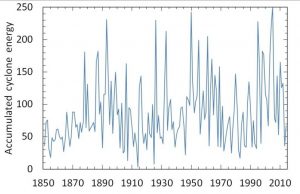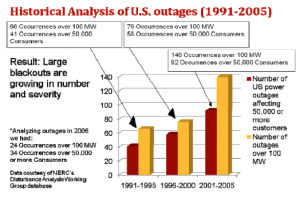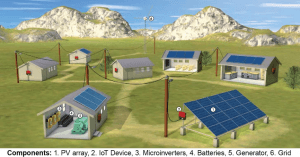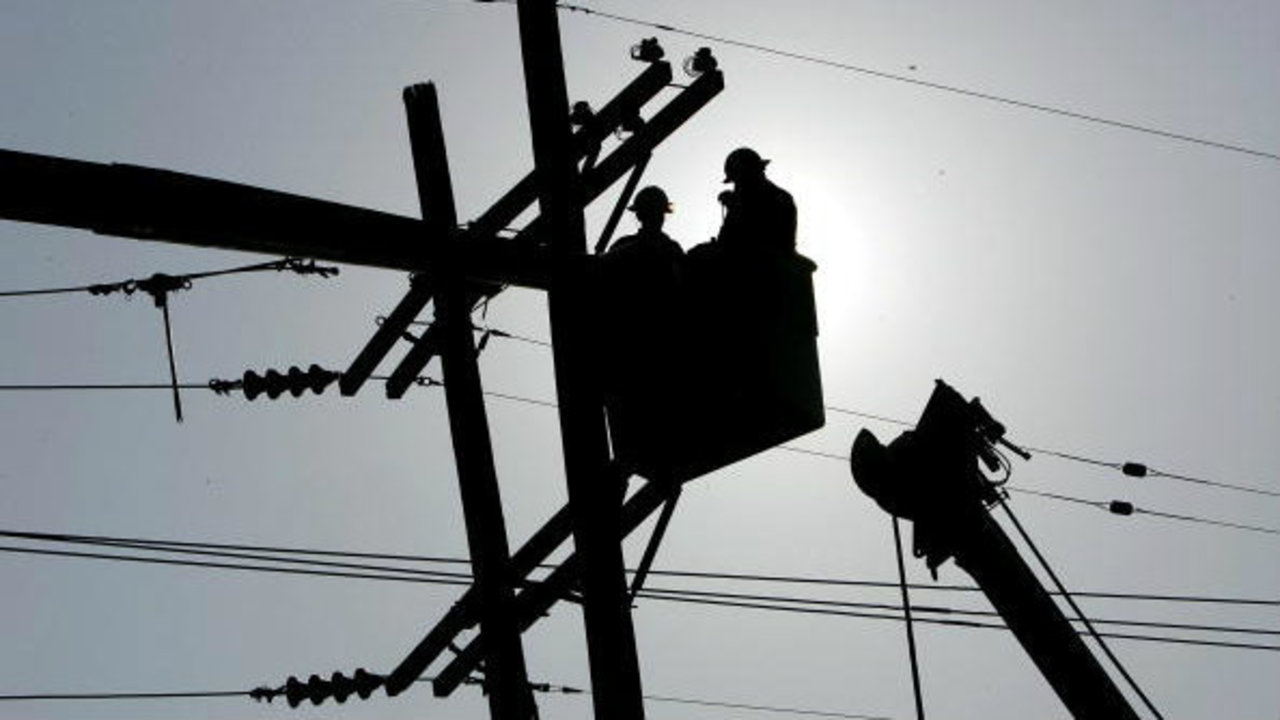Long neglected, grid now failing communities at critical moments
The United States suffers more power outages than any developed nation in the world. As energy demands continue to grow, inadequate funding and fragmented policy have left grid infrastructure in a state of decline. According to a DOE study, the U.S. electric grid lost power 285% more often in 2013 than it did in 1984, costing American businesses as much as $150 billion per year.
Meanwhile, the need to modernize the grid has become more and more visible as the effects of climate change exacerbate an already fragile system. Climate scientists have found that since 2000, fluctuations in high-level jet streams resulting from rising temperatures have led to a more frequent occurrence of phenomena known as “blocking patterns”. These jet streams, whose energy is derived from the temperature differential between the arctic and mid-latitude regions, have slowed due to the arctic warming at a faster rate. The surface level effect of these blocking patterns has been a deadly spike in heatwaves, as well as a dramatic rise in accumulated cyclone energy, which measures the severity of hurricanes and hurricane seasons.

According to Massoud Amin, Professor of Electrical and Computer Engineering at the University of Minnesota, who has been studying trends in U.S. grid resilience since the 1990s, extreme weather events, which used to account for 17 to 21 percent of outages, are now the cause of 68 to 73 percent of major outages. Even leaving aside consideration for climate change, the situation is dire. In a study published in 2011, Amin found that while Japan averaged 4 minutes of interrupted service per year, Americans in the Midwest had 92 minutes, while the Northeast averaged 214 minutes. This data excluded outages caused by “extraordinary events” such as fires or extreme weather.

So the post-war electric grid needs to be updated; who’s going to pay for it? It’s a project that would require an investment of nearly half a trillion dollars to service a system managed by 3,300 utilities and connected by a total of more than 5 million miles of power lines. While the continued operation of the grid is undeniably essential, such a massive investment may seem like throwing good money after bad. With funds in any case not forthcoming, communities are looking to more cost-effective alternatives.
In Pittsburgh, traditional grid power may be going the way of steel. In its place, an interest in microgrids has taken hold, defining a new vision of the city powered increasingly by an integration of renewable energy sources. At one pilot site, a trucking company in nearby Harmar, Pa., a wind turbine and solar panels are connected to a battery bank, forming a microgrid that supplies electricity to the facility. The company expects a return on their $325,000 investment within seven to eight years.
Gregory Reed, head of the University of Pittsburgh energy program, designed the microgrid, calling it “a first step in the direction we want to take for larger scale installations.” Reed envisions entire neighborhoods powered by similar microgrids, which in turn can be connected to one another to create an even larger network of resilient energy. Such microgrid technology has been in use in Alaska for decades, and provides communities with not only the security of a more dependable power grid, but the financial benefit of a more cost effective one.
The Pittsburgh microgrid project has been embraced enthusiastically by city hall, and has even become a model for other grid modernization projects, such as the one underway in San Juan, Puerto Rico. For over a month following Hurricane Maria last September, Puerto Rico remained largely without grid power, in a state of humanitarian crisis. In Puerto Rico as well as in other hard-hit places like Florida, Texas, and Haiti, many are wondering whether utility companies will double down on vulnerable infrastructure, or if they will recognize an opportunity to invest in more resilient green energy.
Unleashing Microgrid Potential
The fact is, green energy infrastructure is considerably more durable than the traditional grid. Though power lines were cut when Hurricane Harvey blew through Texas, no wind farms were damaged. In Florida, after Irma, individuals and even cities with solar arrays were able to generate power immediately through the use of inverters. In India, even in the wake of major monsoon flooding in August, DESI Power, a provider of solar power systems, reported that nearly 75% of their systems remained operational.
However, as Amory Lovins, co-founder of the Rocky Mountain Institute, explained in an opinion piece for the New York Times in October, in many cases of central grid outages, microgrids that would otherwise be functional following a storm are disabled to protect the central grid from power surges. Without inverters to allow a microgrid to operate “island”, or independently from the main grid, producers of green energy are nonetheless left in the dark until the grid is up and running again.

Power2Peer understands the major role that microgrids will play in revitalizing the world’s energy supply. By offering blockchain-enabled adaptive solar microgrid networking, we plan to provide communities with not only a way to substantially reduce energy costs, but a way to keep critical facilities running following severe weather. Utilizing smart inverters, Power2Peer grids can automatically detect a failure in the main grid, redirecting power where it’s needed. This way, when the grid goes down, the lights stay on.
If climate trends continue, it seems that we can expect more extreme weather in the future. If only for financial reasons, it will be wise to develop more weatherproof power distribution systems before the next major hurricane creates the next crisis, the next cycle of endless repairs. Moreover, as Lovins wrote following the aftermath of Maria in Puerto Rico, we owe it to the victims of these superstorms to reduce harm by building more resilient infrastructure. With the development of microgrids and the abundance of renewable energy sources available to us, such goals are well within our reach.


3 Comments
Microgrids for the Common Good - Power2Peer 7 years ago
[…] 10 years ago. Every year sees another record-breaking number of solar gigawatt-hours going online. Microgrids have demonstrated superior resiliency under meteorological duress, often allowing users to restore […]
Decentralized Energy With Blockchain Peer-to-Peer Transactions - Power2Peer 7 years ago
[…] and consumed. While the central grid is not something most communities can live without, with blockchain-enabled microgrids, they can become less dependent on it. By securing microgrid generation data in a blockchain […]
Power crunch: extreme weather causes over 300,000 outages in New Jersey - Power2Peer 6 years ago
[…] hotter summers, stronger winds, and more extreme storms, local communities across the country are turning to alternative energy solutions in a bid for better infrastructure […]